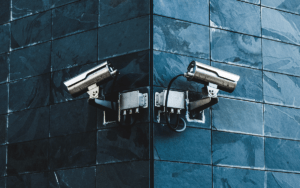July 16, 2015; Next City
This Next City article by Ryan Lugalia-Hollon criticizes the failure of urban planners to plan for public safety or to understand the impact of high incarceration rates on specific urban neighborhoods. He writes, “Students of community and economic development have been trained to redesign residential space, work for affordable housing and advocate for living wage jobs without ever being asked to consider how police, prisons and courtroom decrees shape life in urban neighborhoods.”
Describing this oversight in urban planning as a manifestation of “the New Jim Crow,” a concept he ascribes to Michelle Alexander concerning the mass incarceration in some neighborhoods, the author references a website called “Chicago’s Million Dollar Blocks” to map the money that Illinois taxpayers invest in mass incarceration that could have spent on “schools, housing, transportation, job creation, or parks” in the subject neighborhoods, a process of “incarceration mapping.”
Sign up for our free newsletters
Subscribe to NPQ's newsletters to have our top stories delivered directly to your inbox.
By signing up, you agree to our privacy policy and terms of use, and to receive messages from NPQ and our partners.
What isn’t clear in the brief article is what the mapping tells urban planners how they should rethink their design approaches to inner city neighborhoods.
Alexander has described the New Jim Crow as “a new racial undercaste” in which “millions of people of color are now saddled with criminal records and legally denied the very rights that their parents and grandparents fought for and, in some cases, died for.” There is no question that Alexander has pointed out a dimension of our society that needs to be rectified, as President Obama is now addressing in his recent initiative on criminal justice reform. In her major piece on the New Jim Crow, Alexander called for undoing the “networked systems of laws, policies, customs, and institutions that operate collectively to ensure the subordinate status of a group defined largely by race…There is an elaborate system of control, complete with political disenfranchisement and legalized discrimination in every major realm of economic and social life.”
This means that planners have to reexamine everything they are generating as plans for inner city neighborhoods and ask whether the structures they are contemplating add to or undo the New Jim Crow dynamic. It is insufficient for activists to simply argue for a social movement to emerge to undo the mass incarceration of inner city African Americans. Too many racial justice advocates tend to generate solid research describing the problem, but the challenge of undoing the New Jim Crow requires immediate, practical responses when plans are conjured up for inner city neighborhoods.
In a report on race, planning, and the American city, author Joseph Heathcott wrote of the importance to planners to “study the multiform efforts of diverse peoples over time to build resilient communities, demand justice, and define alternatives.” The NPQ Newswire asks NPQ readers to tell us what you think planners should and could be doing concretely to undo the New Jim Crow in their concrete plans for inner city neighborhoods.—Rick Cohen













